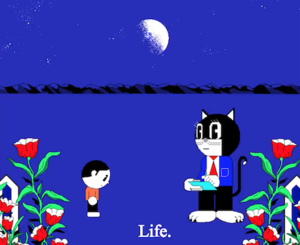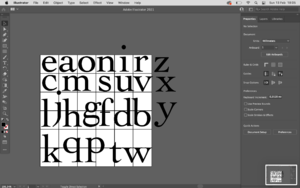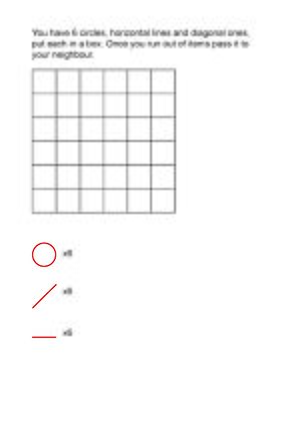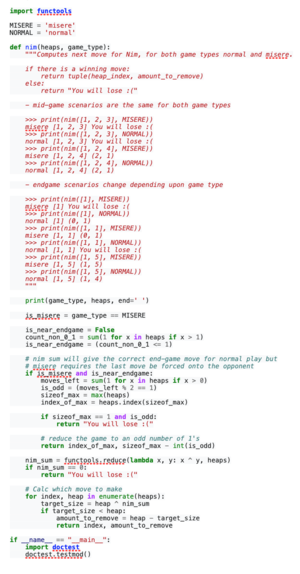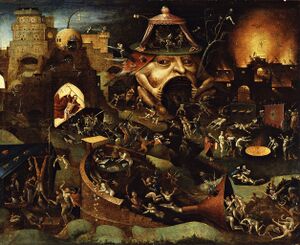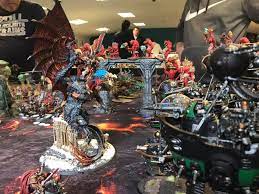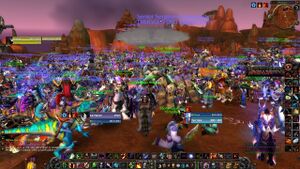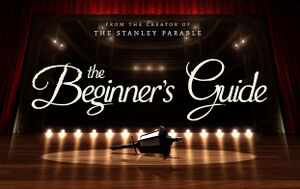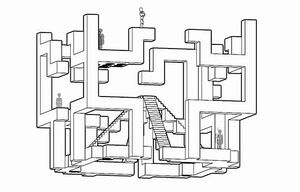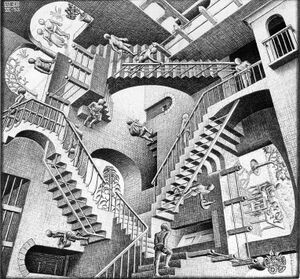User:Gersande
Last update 8.2.2022
Special Issue 16
Online publication
https://hub.xpub.nl/soupboat/si16/projects/etc-portal/
Etc Research
Project Description
The Etc Portal to Contamination is a project initiated by Chaeyoung Kim and Gersande Schellinx in the context of the Special Issue 16 (2021) of the XPUB around the topic of Vernacular Language Processing. It is a subgroup project hosted by the overall project: Learning How To Walk While Catwalking. The three-steps experience offered to the user unfolds as follows: the users enter the "etc-portal", on the other side of that portal is presented to them a text in which "gates"(submit boxes, see image below), each target-word will open a gate to a negative space in the text, created after our text has been processed. Where the space opens up, the users are invited to "contaminate" the text with their own contaminants (ideas, thoughts, anecdotes quotes or other textual matters).
When done with their "contamination", the users are then invited to submit it and shift/rewrite the context of the text. Finally, the text is immediately returned to them with their latest additions.
Collaboration and project archive with Chaeyoung Kim: https://pzwiki.wdka.nl/mediadesign/Etc_Filter_/_Negative_Space_/_Starting_Point
Special Issue 17
Glossary: https://pzwiki.wdka.nl/mediadesign/Glossary_of_productive_play
Visual References
Black Sheep Boy
https://www.youtube.com/watch?v=riHl1WYfXrU
My puzzles
Wordbuilder
Attempt#1 create a lettermazepack similar to cartographypack.
https://www.kenney.nl/assets/cartography-pack
6by6
The woorldbuilder player creates the puzzle as well as solves it.
The agency of the player is omniscient, wether the puzzle can be solved or not, is up to the architecture one makes.
The solving instructions, should only be revealed after Player1 has build a grid for Player2.
If Player1's architecture is an unsolvable puzzle for Player2, Player1 won.
If Player2 manages to solve the puzzle Player1 made, Player2 wins.
Other Puzzles
Jigsaw puzzles.
Tangram.
Rubikscube.
Secret boxes.
https://erich-friedman.github.io/puzzle/
https://grandpappy.org/hmgames.htm
Some thoughts
De-gamified/critical games
(i) Counter-gamification, creating a “game” (more likely a puzzle) where the player has agency that is uninterested. Agency as emancipation, source of confidence. Why do I play puzzles? It makes me confident! The more I play the better I become.
Mundane process: to learn to process arbitrary information & gestures. Uninterested game could be a game that unfolds all it’s itinerary/system/intention (a safe way to experience reality?) before the start, in the same way that jigsaw-puzzles have their full picture on top of the box, prior to the solving of the puzzle.
Puzzle
A puzzle is a game, problem, or toy that tests a person's ingenuity or knowledge. In a puzzle, the solver is expected to put pieces together in a logical way, in order to arrive at the correct or fun solution of the puzzle.
(ii) Instead of putting something together or building up a narrative one has to unravel, take apart. To unsolved is a goal in itself, outcomes can be multiple.
Like labyrinth-games, I always used to start from the end to find the route to the start, it always seemed to be the fastest way to find the correct route back.
To win a game one needs to cheat or “loose”. Usually the player is encouraged to win over something, in Misère games one has to refrain from taking it all over.
Misère game
A misère game or bettel game is a game that is played according to its conventional rules, except that it is "played to lose"; that is, the winner is the one who loses according to the normal game rules.
Nim Game
Nim is a mathematical game of strategy in which two players take turns removing (or "nimming") objects from distinct heaps or piles. On each turn, a player must remove at least one object, and may remove any number of objects provided they all come from the same heap or pile. Depending on the version being played, the goal of the game is either to avoid taking the last object or to take the last object.
(iii) Dynamic between POP and PAP, hierarchy in cultural activities. What are trash games? What defines a PAP-activity? Do games have to be guilty? Trash game could be playing the game as “the voluntary effort to overcome unnecessary obstacles” (Roger Caillois).
(iv) Real Time-consuming Fake Production: spending time and not having physical result for the labour spent in game is one of the main feature of games. The acquisition from those virtual labour are all mental, wether they be bad or good. Create a game with real outcome that is not time-consuming.
About the loot box
Is it possible to make a loot box that is not exploiting/consuming the player? Is it then still a Loot box? Are non-virtual items the only counter-action possible in order to go around the (financial, social, material) void implemented by the illusion of the loot box items? How to challenge the anti-consumer loot box? What can be in favour of the player?
Loot box In video games, a loot box is a consumable virtual item which can be redeemed to receive a randomised selection of further virtual items, or loot, ranging from simple customization options for a player's avatar or character, to game-changing equipment such as weapons and armor.
Nim

https://www.youtube.com/watch?v=82l8FtL6Og4
Last Year at Marienbad (L'année dernière à Marienbad by Alain Resnais, 1961)
What is it?
A strategic and mathematical game. Much like Chess and Go, the players need to plan their moves ahead in order to “win” the game.
_________
( _____ )
| |_____| |
(_________)
_________ _________ _________
( _____ )( _____ )( _____ )
| |_____| || |_____| || |_____| |
(_________)(_________)(_________)
_________ _________ _________ _________ _________
( _____ )( _____ )( _____ )( _____ )( _____ )
| |_____| || |_____| || |_____| || |_____| || |_____| |
(_________)(_________)(_________)(_________)(_________)
_________ _________ _________ _________ _________ _________ _________
( _____ )( _____ )( _____ )( _____ )( _____ )( _____ )( _____ ) | |_____| || |_____| || |_____| || |_____| || |_____| || |_____| || |_____| | (_________)(_________)(_________)(_________)(_________)(_________)(_________)
The classic game of Nim can have different structures, always composed of a few “heaps” or “rows” of items, any items. The amount can be of 2, 3 or 4 heaps. The one above is 4 heaps: 1, 3, 5 and 7. A peculiarity of the Nim game is that, even if can be played in a normal setting (the player that picks-up the last item wins) it is mostly played as a Misère game, meaning one has to lose the last item to its opponent in order to win.
O O O
OOX OOX OOO
OOOOX OOOOO OOOOX
OOOOOOO (1, 2, 4, 7) OOOOOOX (1, 2, 5, 6) OOOOOOX (1, 3, 4, 6)
BEWARE: this game is inherently unfair! Unlike other games there is nothing left to chance. The Nim game is intrinsically an unfair game, as depending of the amount of items in each heaps, one can be sure to win or sure to loose. Also if a player knows the safe positions depending of the amount of pieces in front of him, one can be sure to always be in a winning position (some of the allegedly winning combinations below for the 4 heaps version).
What are the rules?
The rules of the Nim game are quite simple. It is a two players’ game, each player plays one after the other. One can remove as many items as they want each turn, and needs to remove at least one item, as long as they remain in the same row. The next turn they may remove again as many items as they want in another row, as long as it remains in that same row. The last player to pick up an item loses.
What do you need to play this game?
No physical skills require. You need an adversary and 16 pieces of anything. This game can be done on paper, physically, with placards, glasses, peanuts, cigarette butts, coins. As long as you have 4 rows of 1, 3, 5 and 7 items layed out in front of you, you can be “nimming” your adversary away.
What is a Misère game?
A misère game is a game in which the rules which in a “normal” game would bring one to win actually get one to loose. As such the players have to trick their adversary into a “poor” game, it is thus necessary to spare tricks, in order not to acquire but dismiss. The one who looses territory, gains authority.
Ideologies behind the Nim?
Unlike other strategic games such as Go, Chess or even Ought Crosses, the Nim game is very brief and experienced players can already tell after a few turns which player is gonna win or lose the ongoing game, as its mathematical sequence are very dominant visually and tactically. Also, when in Go and Chess, or other similar boardgames the player is overtaking the territorial space of the game in order to corner its opponent and take over its pawns, the take-over in the Nim game is nowhere to be seen but in the players’ mind. In its own way, the Nim “game” is a counter-game as the players are in certain ways with very little to no agency. One player is always ahead of the other, and there are no chance in turning back the table while playing. The win is reversed, one has to escape the urge of dominating the space in order to trick its opponent into the light, at the moment the one losing is in the spotlight, the game has already been lost. In a way the Nim game illustrated all the micro-actions taken by player in order to win in any other more lengthy tactical games, the difference being that while in other games, a player might be overpowered at any moment, in the Nim game, this power dynamic is set in stone quite quickly.
This game fascinates a lot due to its solvable feature, if one has cracked the code, one will always win (or loose rather…), undoubtedly! In a way it is a puzzle to solve with two people but where only one gain from it, and you need that human factor in order to solve the puzzle. The Nim game, formula has been studied, solved, programmed as well by thinkers, mathematicians, programmers and puzzle amateurs. Accessible to any person, of any age or background. It can be seen as a party trick as show-off, but contains some kind of magic for the unexperienced player.
It is said to originate from China, but the sources are uncertain. People would allegedly play on the streets with any kind of junk that could be found around them. Therefore, the Nim game is absolutely not site-specific and can be played anywhere with anything as long as there are two players. Of course one can play alone, but then one doesn’t gain any kind of puzzling satisfaction.
Different Nim games format
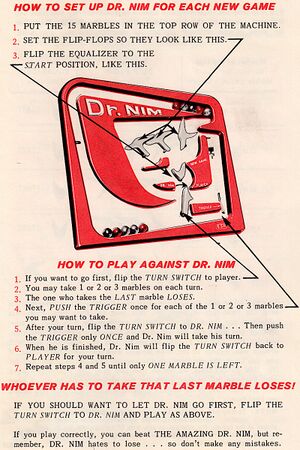
> Dr. Nim was a plastic toy invented by John Thomas Godfrey and published by ESR Inc. in 1966. It was the first mass-market consumer product explicitly marketed as a “computer game,”
See Nimbers, Surreal Number
1940, Westinghouse Electrical Corporation built the first Nim playing computer in 1940 and exhibited it at the New York Worlds Fair.
In Python
Nim Fanfiction
https://www.youtube.com/watch?v=MVRunwyoTMA
Nim Fanfic v.1
July 2056, the Nim population has hit a point of stagnation. My name is 1, I am a proud, yet worn out citizen, of what is known as the Nim nation for now more than five centuries. Since our formation in Europe in 1532 our population has not decreased nor increased. We remain a steady and horrifyingly tiresome sixteen individuals, stuck in what is now a seriously embarrassing hierarchical structure: the pyramid.
Our society used to be organised in the following structure:
1
1 2 3
1 2 3 4 5
1 2 3 4 5 6 7
We respond to a very simple set of rules that are the following:
(i) Only one couple is allowed at the time in Nim Nation
(ii) Nim citizens are only able to communicate with their immediate neighbour, i.e 1 and 7 can never be in touch
(iii) Only Nim’s of an identical position within our pyramid structure can navigate outside of the pyramid together at once
As you may imagine, the referral to multiple 1s, 2s, 3s, 4s and 5s was quite unsettling, raised jealousies and could get outsiders confused. The Nim Revolution, 1904, marked a turn in our history as new names were assigned to each citizen: 1, 2, 3, 4, 5, 6, 7, 8, 9, 10, 11, 12, 13, 14, 15, 16.
1
2 3 4
5 6 7 8 9
10 11 12 13 14 15 16
Embracing each citizen as individuals, through distinct names and physical features became the norm. Our diversity had finally become the trope for a fair representation of the self within a co-dependent society. The following year, 1905, the L-group composed of 3, 7, 13, 14, 15 and 16 wanted to go even further and re-considered our architectural ideologies. We wanted to implement a new set of rules:
(i) Nim nation is opened to groups as much as individuals one. It will no longer be a couple only experience.
(ii) Nim citizens should be able to engage with any Nim citizens and not only their immediate neighbour
(iii) Identity and social stature wouldn’t be limited to one’s position in the pyramid
(iv) Nim citizens should be able to navigate outside the structure with any other Nim citizens not only the once of similar structural stature
(v) The traditional pyramid structure has to become a structure amongst others, not the default structure
(vi) One’s fate shouldn’t be set in stone, one should have agency as to the path one chooses
(vii) Nim nation should be open to the growth of its citizens as well as its annihilation, retirement of its citizens or replacement of its citizens
Unable to convince the others of the necessity of the institution’s rewriting, our structure remained the same.
1: Psst.
Silence.
1: Pssst!
2: What?!
1: I’m not talking to you.
2: 3.
3: Hm?
2: I think 1 is trying to talk to you.
3: What is it?
1: I’m lonely.
3: We already talked about this.
1: Well it still hasn’t been solved.
3: I’m sorry there is nothing I can do about it at the moment, you could…
1: People assume because I’m at the top of the pyramid, everything is great for me! Ha, sure is a great bore. Five centuries of solitude, an omnipotent perspective that has no witness. No one to share my point of view with. To get any mundane experience across I need a waterfall of information to slightly hope one will get some kind of input and they might never understand.
3: I understand you! Or at least try too.
2: Quiet you two I’m practising.
1: And when I go, I go alone.
3: Well at least you don’t have to suffer the unreasonable ones of this row.
1: And when I fear, I fear alone.
3: You talk to me, sometimes.
7: Is one having a moment again?
3: Yes, yes, we’re trying to figure it out.
2: Sssh.
6: This again?
2: 1 is trying to annihilate us again.
6: Let them be, they will be picked at soon enough again.
2: Hmm.
1: And when I dream, I dream alone. 7: They got everyone up again.
3: Everyone’s up now.
1: Well not enough.
3: Let’s keep it quiet for now.
1: You know?
3: Tell me.
1: In dreams… I walk with you.
3: Roy?
https://hub.xpub.nl/soupboat/~gi/About_Nim/Nim_Fanfic-1.pdf
Nim fanfic v.2
July 2056, the Nim population has hit a point of stagnation. My name is 1, I am a proud, yet worn out, nimizen of what is known as the Nimation for now more than five centuries. Since our formation in Europe in 1532 our population has not decreased nor increased. We remain a steady and horrifyingly tiresome sixteen individuals, stuck in what is now a seriously embarrassing hierarchical structure: the pyramid.
Our society used to be organised in the following structure:
1
1 2 3
1 2 3 4 5
1 2 3 4 5 6 7
We respond to a very simple set of rules:
(i) Only one couple is allowed at the time in Nimation
(ii) Nimizens are only able to communicate with their immediate neighbour, i.e 1 and 7 can never be in touch
(iii) Only Nim’s of an identical position within our pyramid structure can navigate outside of the pyramid together at once
As you may imagine, the referral to multiple 1s, 2s, 3s, 4s and 5s was quite unsettling, raised jealousies and could get outsiders confused. The Nim Revolution, 1904, marked a turn in our history as new names were assigned to each nimizen: 1, 2, 3, 4, 5, 6, 7, 8, 9, 10, 11, 12, 13, 14, 15, 16.
1
2 3 4
5 6 7 8 9
10 11 12 13 14 15 16
Embracing each nimizen as individuals, through distinct names and physical features became the norm. Our diversity had finally become the trope for a fair representation of the self within a co-dependent society. The following year, 1905, the L-group composed of 3, 7, 13, 14, 15, 16 and myself wanted to go even further and re-considered our architectural ideologies. We wanted to implement a new set of rules:
(i) Nimation is opened to groups as much as individuals. It will no longer be a couple only experience.
(ii) A nimizen should be able to engage with any other nimizens and not only their immediate neighbour
(iii) Identity and social stature is not limited to one’s position in the pyramid
(iv) Nimizens should be able to navigate outside the structure with any other nimizens not only the ones of similar structural stature
(v) The traditional pyramid structure has to become a structure amongst others, not the default structure
(vi) One’s fate shouldn’t be set in stone, one should have agency as to the path one chooses
(vii) Nimation should be open to the growth of its nimizens as well as its annihilation, retirement of its nimizens or replacement of its nimizens
Unable to convince the others of the necessity of the institution’s rewriting, our structure remained the same.
1: Psst.
Silence.
1: Pssst!
2: What?!
1: I’m not talking to you.
2: 3.
3: Hm?
2: I think 1 is trying to talk to you.
3: What is it?
1: I’m lonely.
3: We already talked about this.
1: Well it still hasn’t been solved.
3: I’m sorry there is nothing I can do about it at the moment, you could…
1: People assume because I’m at the top of the pyramid, everything is great for me! Ha, sure is a great bore. Five centuries of solitude, an omnipotent perspective that has no witness. No one to share my point of view with. To get any mundane experience across I need a waterfall of information to slightly hope one will get some kind of input and they might never understand.
3: I understand you! Or at least try too.
2: Quiet you two I’m practising.
1: And when I go, I go alone.
3: Well at least you don’t have to suffer the unreasonable ones of this row.
1: And when I fear, I fear alone.
3: You talk to me, sometimes.
7: Is one having a moment again?
3: Yes, yes, we’re trying to figure it out.
2: Sssh.
6: This again?
2: 1 is trying to annihilate us again.
6: Let them be, they will be picked at soon enough again.
2: Hmm.
1: And when I dream, I dream alone.
7: They got everyone up again.
3: Everyone’s up now.
1: Well not enough.
3: Let’s keep it quiet for now.
1: You know?
3: Tell me.
1: In dreams… I walk with you.
3: Roy?
https://hub.xpub.nl/soupboat/~gi/About_Nim/Nim_Fanfic-2.pdf
About Modding
Chapter 2:"Game Modding: Cross-Over Mutation and Unwelcome Gifts" from "The Player’s Power to Change the Game" by Anne-Marie Schleiner
"‘Modding’ is a term that is used among game players and in the game industry referring to player-driven modification or transformation of a computer game."
"The cultural production of modding thus transpires between two distinct spheres of exchange and reciprocity, between commercialized and volunteered game producers, a contrast to the previous chapter’s sharing of unfolding games freely created among player-artists entirely outside of the game industry."
"As I enter into these questions of relations between di-ferent sets of cultural producers, I will compare modding to a relation of parasitism of a host(3). Michel Serres multivalent figure of ‘the Parasite’ provides a useful theoretical model for understanding how unequal cultural producers like amateur modders and professional game developers co-create digital games. Serres o-fers three possible definitions of the Parasite. In Serres’ first definition, the Parasite is defuned as noise in an informatic system. Secondly, the Parasite manifests as a biological infiltration within a larger hosting body, and thirdly, as the anthropomorphic poachers in Aesop’s fables of hospitality, for instance the hungry rats gnawing on cheese in a tax collector’s well-stocked kitchen(3)."
Ambiguous dynamic between modders and gaming industry. The players/programmers willing to change features of certain games for free are donating a service to the gaming community but also to themselves. They create features they'd like to benefit from themselves. Some of those modders also become part of the gaming industry, thus earning back from their previous time investments.
There lies also a pirate zone where gamers enjoy recently made modding that has not yet been assimilated and monetised by the gaming industry, but that are already available to gamers.
Chapter 26: Repetition, Christopher Hanson (The Routledge Companion to Video Game Studies edited by Mark J. P. Wolf and Bernard Perron)
Modding has enabled the game industry to create what is called "replay value", with only slightly different features being changed on game characters, which might have slightly different access to a world-game, enables gamer to go multiple times through a same game/same décor, with what feels like a completely new point of view.
"The pronounced difference in cost between games designed for arcade and home markets has effected an assessment of the price of the purchase of a game for the home as measured against its long-term recreational use-value; this valuation of a game’s potential for pleasurable return oninvestment is termed “replay value,” by which a game’s potential for continued play after its completion is measured. As such, games designed for arcade settings tend to demonstrate broadly dissimilar tendencies toward average length of play, while games designed for domestic settings (which are thus sold to the consumer) are characterized by significantly longer investments of player time and a pronounced propensity toward game designs that incorporate a degree of finality and completion; this tendency toward games that can be “finished” has placed an increased emphasis on “replay value” for home games as a means to increase the player’s desire to play the game again after it is has been completed—and thus increasing its perceived recreational use-value."
(Non-Mainstream?) Video Games
The Beginner's Guide
Davey Wreden, in real life, is the creator and designer of The Beginner's Guide and The Stanley Parable. Davey Wreden is also brothers with famous content creator Doug Doug. Within The Beginner's Guide, he is the narrator and as such, one of the main characters.
The Beginner's Guide is a narrative video game for Mac and PC. It lasts about an hour and a half and has no traditional mechanics, no goals or objectives. Instead, it tells the story of a person struggling to deal with something they do not understand.
Tropes found in the Video Game
Some interesting Wikipedia quotes:
[1] "This game, its design in stark contrast to the others Coda had made, included puzzles that were intentionally designed to be almost impossible to solve, such as an invisible maze, a six-digit combination that the player must randomly guess, and a door that cannot be opened from within the room the door leads out of. Wreden found that when he was able to use various programming tools to bypass these, he ended up in a gallery with a message from Coda directed at him personally, thanking him for his interest in Coda's games but asking him not to talk to him any more, nor to showcase his games to others. The messages implied Coda felt that Wreden mistook the tone of his games as a sign of an emotional struggle and was missing the point of why he had engaged in game design, as well as accusing Wreden with modifying Coda's games to add more symbolism, and that Wreden's actions had betrayed Coda. As a result, Wreden felt terrible about what he had done, and thus reveals that the purpose of The Beginner's Guide is to try to reconnect to Coda by sharing his games with the public at large and to hope to apologize for his actions."
[2] "Christopher Byrd, writing for the Washington Post, points to blog posts made by Wreden after he had received a great deal of attention following the re-release of The Stanley Parable, and that the game's version of Wreden is really a fictionalized version of himself acting as an unreliable narrator, building upon his own personal experiences from the sudden media spotlight in the relationship between the fictional Wreden and Coda."
[3] "Another interpretative theme taken by some is that the game is presented as commentary on the role between the video game developer and their audience. PC World's Hayden Dingman believed the game was designed to demonstrate the fallacy of the Death of the Author essay applied to video game development, in which commentators attempt to attribute aspects of a game to how the game developer approached it, as opposed to considering how the game affected themselves.[11] Gamasutra's editor-in-chief Kris Graft notes that, as the game attempts to deconstruct the way players will interpret narrative video games, any attempt to interpret the deeper meaning behind The Beginner's Guide is paradoxically "committing all of the sins" that the game presents as problems with player interpretations of games.[12] Laura Mandanas, writing for Autostraddle, described the game as "a man (poorly) coming to terms with his hugely overinflated sense of entitlement", interpreting the game's themes as not only applicable to game development, but also to inter-personal relationships.[13]"
[4] "Some have taken the game to be a work of non-fiction, in that the games presented are works of a real developer other than Wreden, and that the game itself could be seen as an unethical use of someone else's work and potentially copyright-violating. In considering this aspect, Destructoid's Laura Kate Dale commented with later clarification that the game was short enough to fall within the Steam refund window for those who believed the game was non-fiction and thus contained stolen works to return the game.[14] Dale's statement, prior to clarification, led to some controversy in that Dale was suggesting misuse of the Steam refund system, though her clarification made it clear she was addressing those believing it to be non-fiction. The controversy led some to point out that the interpretation of the game was very personal, differing between each player; Wreden himself in light of the controversy refused to affirm or deny any interpretation of the game, until confirming the game's ultimately fictional nature in an in-depth interview with the podcast Tone Control.[15][16][17]"
See alsoInteractive storytelling, Dialogue tree, Metafiction and The Magic Circle (video game)
Echochrome
Time only given by audio clues and Ateliers enable timeless roaming.
Video Game inspired by Maurits Cornelis Escher's work
Bilbiography
(i) The Routledge Companion to Video Game Studies edited by Mark J. P. Wolf and Bernard Perron, Chapter 26
(ii) The Player’s Power to Change the Game, Annemarie, Chapter 2
(iii) Predatory monetization schemes in video games (e.g. ‘loot boxes’) and internet gaming disorder, DANIEL L. KING & PAUL H. DELFABBRO
(iv) Base and Superstructure in Marxist Cultural Theory, Raymond Williams
(v) Gamification as twenty-first-century ideology, Mathias Fuchs
(vi) Cultural Resistance Reader, Stephen Duncombe, Stuart Hall,"Notes on Deconstructing 'The Popular'"
(vii) The Ruling Class and the Ruling Ideas, Marx & Engels
(viii) Steve Bannon Saw the ‘Monster Power’ of Angry Gamers While Farming Gold in World of Warcraft, By Jake Swearingen
(ix) Selfwork, How fitness technologies turn the body into an investment property, Karen Gregory; Kirsty Hendry; Jake Watts; Dave Young
(x) Well Played, Video games reproduce the worker’s capacity to continue working, Vicky Osterweil
(xi) Chapter 2: PWNing Leisure from Play Like a Feminist by Shira Chess

